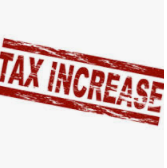
What is A Collection Due Process Hearing?
A collection due process (CDP) hearing gives you one last chance to avoid a federal tax lien or tax levy. You will know you have a right to request a CDP hearing because you will receive a CDP notice. This notice is sent when any of the following IRS collection actions are being taken:
- Filing of a Federal tax lien
- Bank account levy
- Jeopardy Levy
- Levy on Your State Tax Refund






















Recent Comments